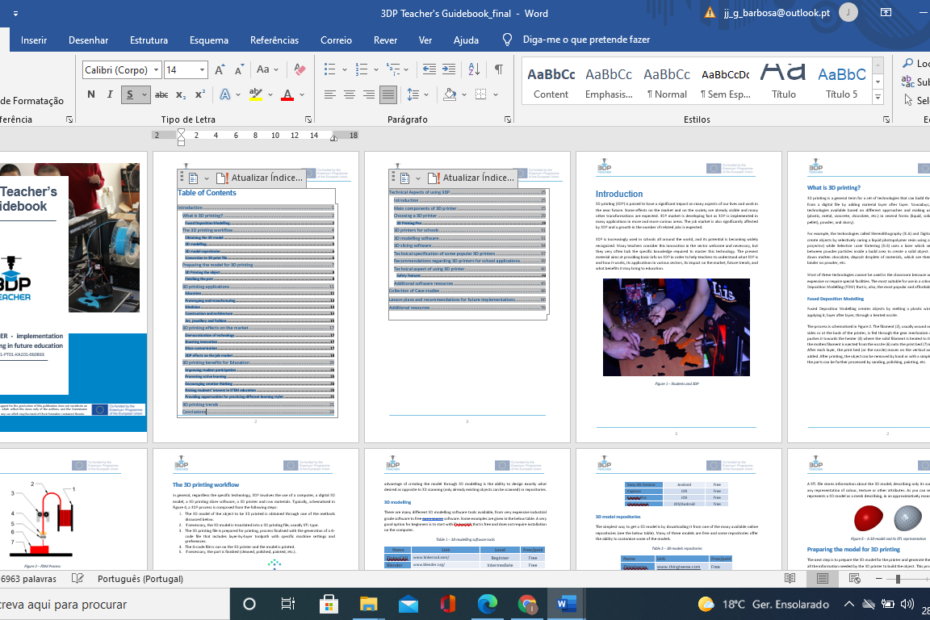Schools around the world are using 3D printings more and more, and its potential is being widely recognized. Most teachers consider this innovative development to be welcome and necessary, but they often do not have the knowledge to be able to use a 3D printing.
Understanding how this growing technology works in school can benefit students in fields such as music, design technology, history, geography, biology and many other subjects, so we emphasize the need for training and good technical support to implement 3D printing into the school curriculum for success. There is general agreement on the potential of 3D printers as a teaching tool, as long as teachers have adequate knowledge about this technology.
The 3DP Teachers’ Guidebook aims to give basic information about 3DP, in order to help teachers understanding what 3DP is, how it works, its potential, its impact on labor and employment, future trends and what benefits it can bring to education. It will also show teachers the possibilities of implementing 3D printers, best practice examples, recommendations on methodology, hardware and software tips, as well as security issues.
Its purpose is to enable more and better training and capacitation of teachers in the development of activities related to 3D printing. It presents a number of possibilities that the 3D printer offers, both in its everyday use and also in response to specific situations in a school context. In this case, the manual will serve as a support for the teacher, clarifying doubts, presenting solutions and giving suggestions, being a tool of easy access and quick consulting. It can be used not only as digital resource, but also as a stand-alone document available for printing and direct in-class usage.
Another objective is to give teachers most recent knowledge on the subject, show them possibilities of implementation and guide them step by step through the process of preparation, designing and printing of an object.
At the beginning of the project twenty teachers were invited to fill out questionnaires and give feedback on the Guidebook. They also contributed to the development of the Guidebook by preparing lesson plans and giving recommendations on the topics they taught. Part of the guidebook is especially useful from methodological point of view and will serve as possible initial ideas on how to prepare a lesson using 3D printer.
The recommendations covered teachers’ opinions on possibilities of implementation, benefits it may bring as well as ideas on where and how 3D printers can be used on their subjects and what concepts can be presented as 3D models printed to make learning process more enjoyable and engaging. With this technological tool in the classroom, students become more interested in learning and bring their creativity to full steam.
It is important that both teachers and students realize the impact that dominating this tool will have on the job market soon. Knowing how to take advantage of the resources of the 3D printer in the classroom will be a differential for those who wish to enter the world of work.

 Español
Español Ελληνικά
Ελληνικά Italiano
Italiano Polski
Polski Română
Română Turkish
Turkish Português
Português
 The European Commission's support for the production of this publication does not constitute an endorsement of the contents, which reflect the views only of the authors, and the Commission cannot be held responsible for any use which may be made of the information contained therein.
The European Commission's support for the production of this publication does not constitute an endorsement of the contents, which reflect the views only of the authors, and the Commission cannot be held responsible for any use which may be made of the information contained therein.